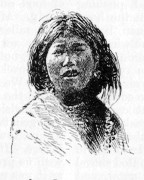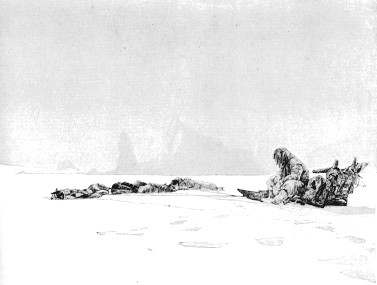Ivan Veniaminov
Today, technology helps a Siberian priest to understand a new people. The University of Houston's College of Engineering presents this series about the machines that make our civilization run, and the people whose ingenuity created them.
The Russian Orthodox priest, Ivan Veniaminov, came out of Siberia in 1823. Veniaminov was born near Irkutsk, north of Mongolia. During his years in the Irkutsk seminary he also studied mechanics. He was not just a priest. He was also a skilled clock and instrument maker.
Then Veniaminov heard that missionaries were needed among the Aleut natives on the south Alaska coast. So this intellectual, whose hands had learned right along with his head, set off for Unalaska. That's one of the Aleutian Islands.
First he went to Sitka, the old Russian capital in North America. He spent a year there learning the Aleut language and the lay of the land. Then he shipped to Unalaska.
He stayed ten years in that cold, remote place. He taught the Aleuts carpentry, brick-making, and stone masonry. Together, they built a church and a school. He created the first written Aleut language. He translated the Gospel and a catechism into Aleut. He kept the first Alaskan weather records.
For ten years this six foot, three inch powerhouse traveled local islands in an Aleut kayak. Those boats of skin, driftwood, and whalebone were erratic and buoyant -- fast and unstable. He wrote,
Nature failed to [give the Aleuts] the material necessary for boats, that is wood, but ... in compensation, she gave them greater ingenuity for the perfection of a special new kind of [boat.]
Veniaminov's success traced right back to his respect for the Aleuts. He called them devout, intelligent, and industrious. And so they were! They'd already honed a complex survival technology on the very edge of the world. They'd also taken up the Russian game of chess, and they were beating the Russians at it.
Veniaminov went back to Sitka in 1834. There he wrote the definitive ethnographic study of the Aleut people. He also built a remarkable cathedral. He designed and built a great clock for its tower. A visiting English sea captain wrote,
The padre [was a] powerful athletic man, about 45 . . . quite herculean, and very clever. I took a great liking to him. [I visited] his workshop, where I saw a good barrel organ, a barometer, and several items of his own manufacture.
Later, Veniaminov repaired two barometers for the captain.
For 27 years Veniaminov ranged up and down the coast, doing everything. He survived starvation and shipwreck. He sailed as far south as the Russian settlement in California.
All the while, his huge capability fed his vision. He had the means for seeing how the work of a people's hands makes them what they are. He could see the Aleut people -- whole.
I'm John Lienhard, at the University of Houston, where we're interested in the way inventive minds work.
(Theme music)
Veniaminov, I., Notes on the Islands of the Unalaska District. (L.T. Black and R.H. Geoghegan, tr.; R.A. Pierce, ed.) Kingston, Ont.: The Limestone Press, 1984. (This includes a nice biographical sketch.)
Shenitz, H.A., Father Veniaminov, the Enlightener of Alaska. The American Slavic and East European Review, Vol. XVIII, 1959, pp. 75-80.
Dyson, G., Baidarka: The Kayak, Anchorage: Alaska Northwest Books. 1986. (This includes several references to Veniaminov. See the Index.)
See also Episode No. 669 for more about the baidarka.
I'm grateful to Walter van Horn, Curator of Collections, and Diane Brenner, Archivist -- both at the Anchorage Museum of History and Art -- for their kind help. Walter van Horn suggested Veniaminov as the subject of an episode.

From the November, 1896, Scribner's Magazine

From the July 1896 Century Magazine